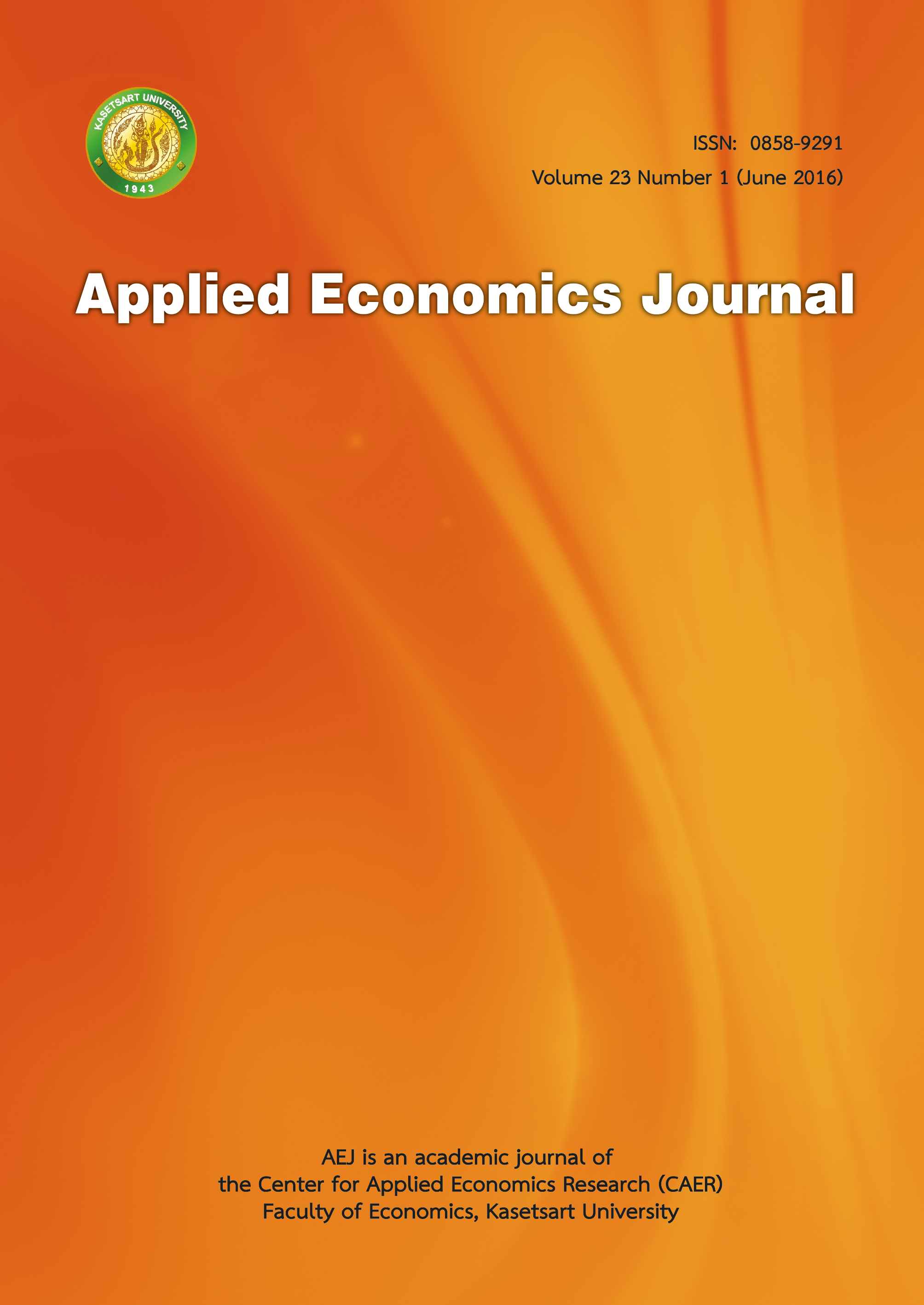Income, Saving, and Wealth of Thai Rural Households: A Case Study of Saving Adequacies
Main Article Content
Abstract
This paper investigates the savings and wealth of Thai rural households with an emphasis on the issue of saving inadequacies. We use the household survey conducted by the National Statistical Office in 2009 as a database. First, we hypothesize an interrelationship between household income, saving, and assets. Further, we estimate the scope of the relationship using an econometric technique and examine savings predicted over the household’s lifecycle. Our findings indicate that: (i) approximately 29% of Thai rural households overspent their income; indeed, this group failed to save and incurred negative savings, (ii) 47% of Thai rural households inadequately saved due to a “weak definition” which signifies the amount saved is inadequate or too little to cope with future risks and uncertainties. Calculations related to the probabilities of saving inadequacies compared age-cohorts, occupations, and levels of education. The last section discusses long-term implications of saving inadequacies, and limitations of the model for improving saving practices within Thai rural households.
Article Details
The paper is published under CC BY-NC-ND, in which the article is freely downloaded and shared in its original form non-commercially and its citation details are identified.


